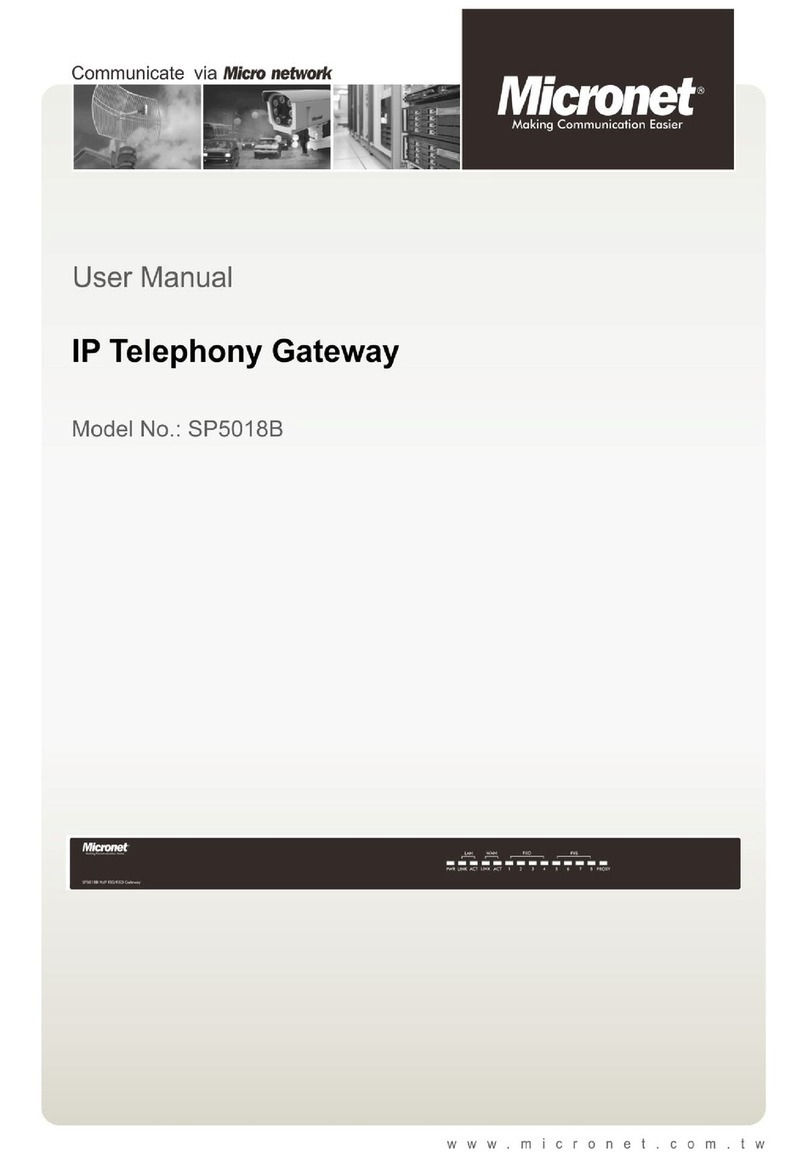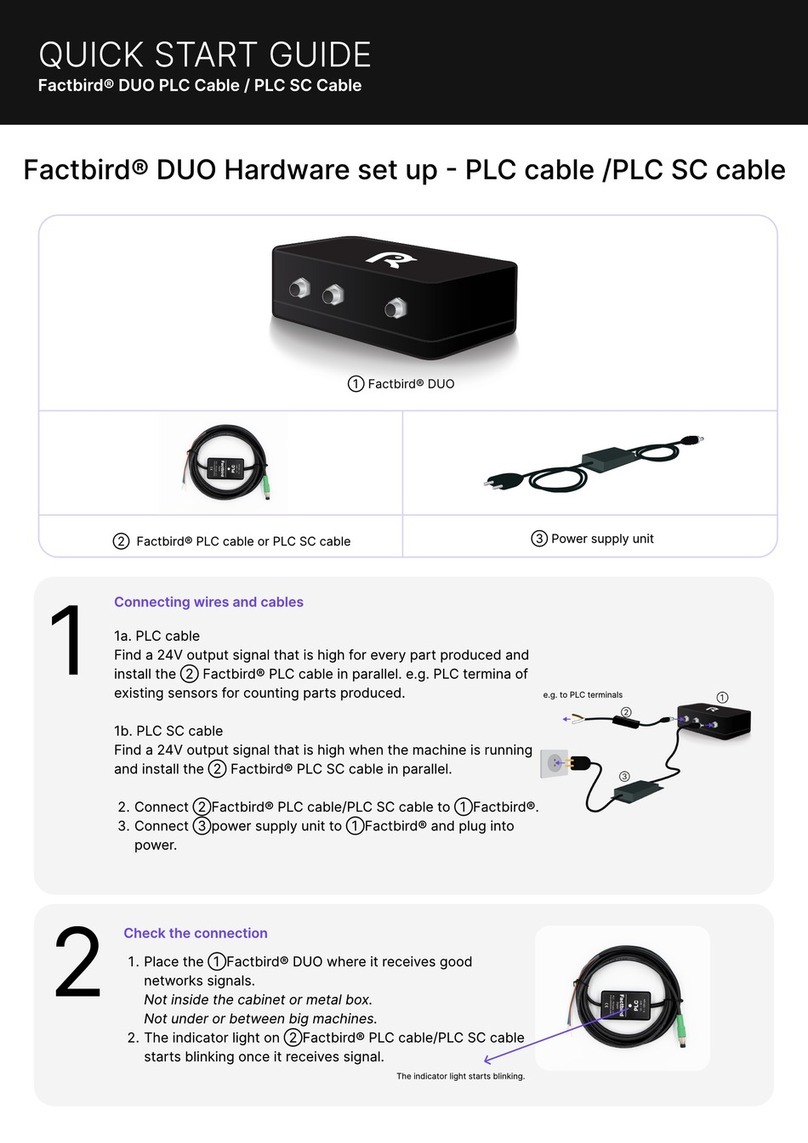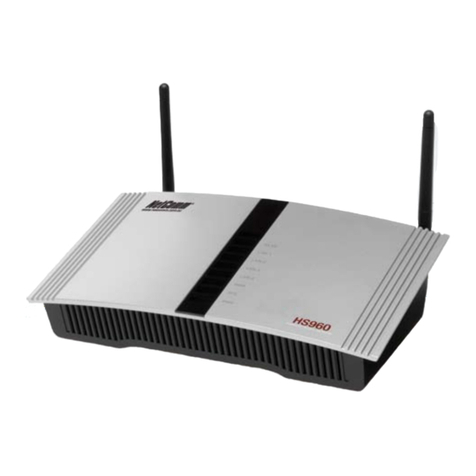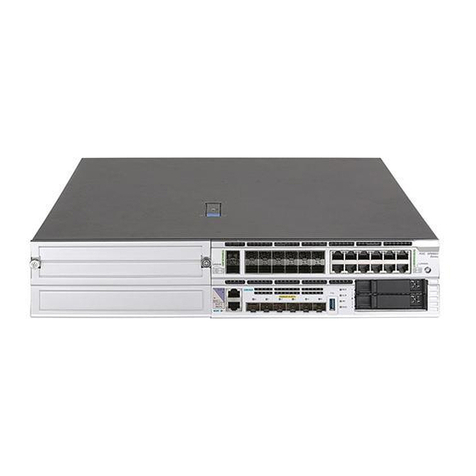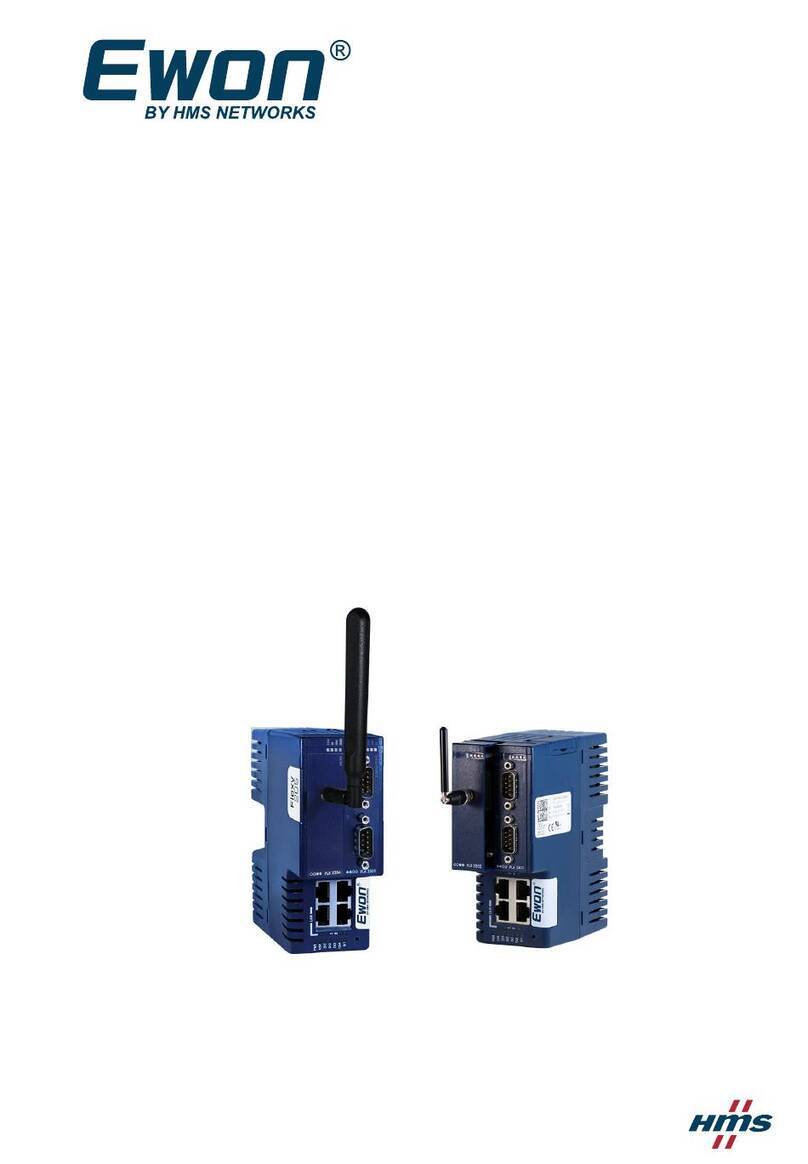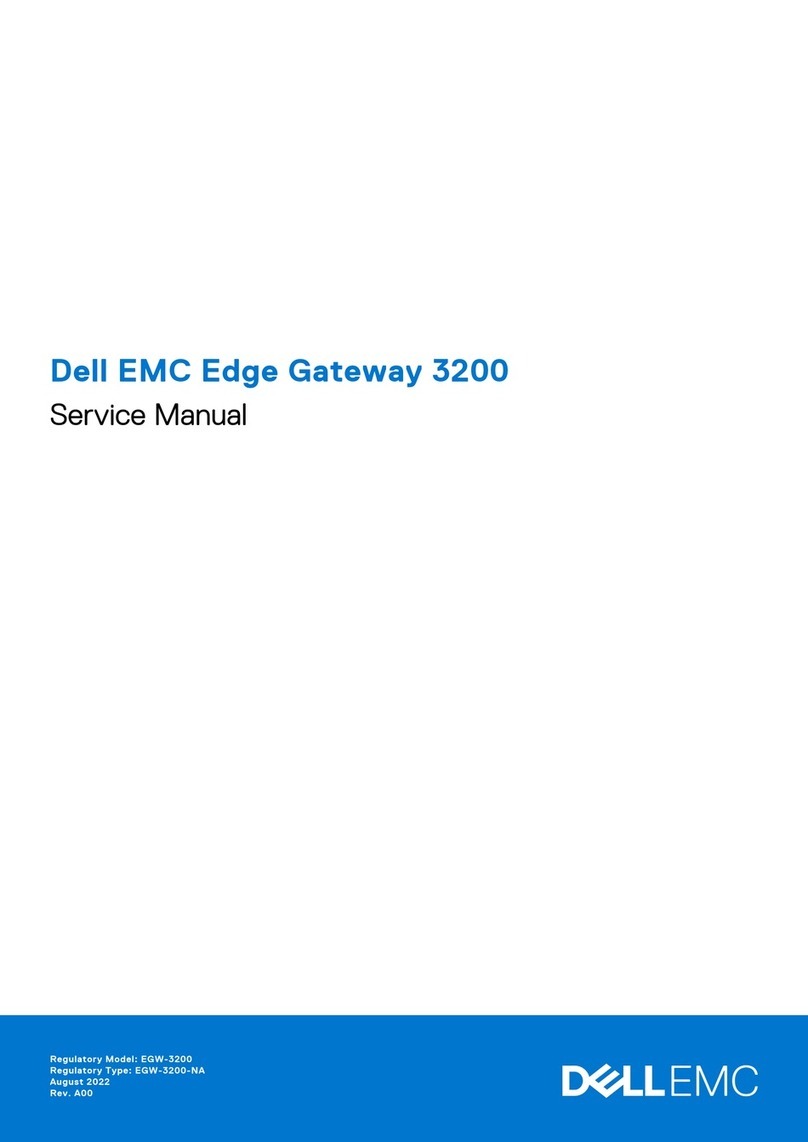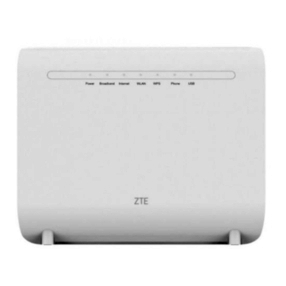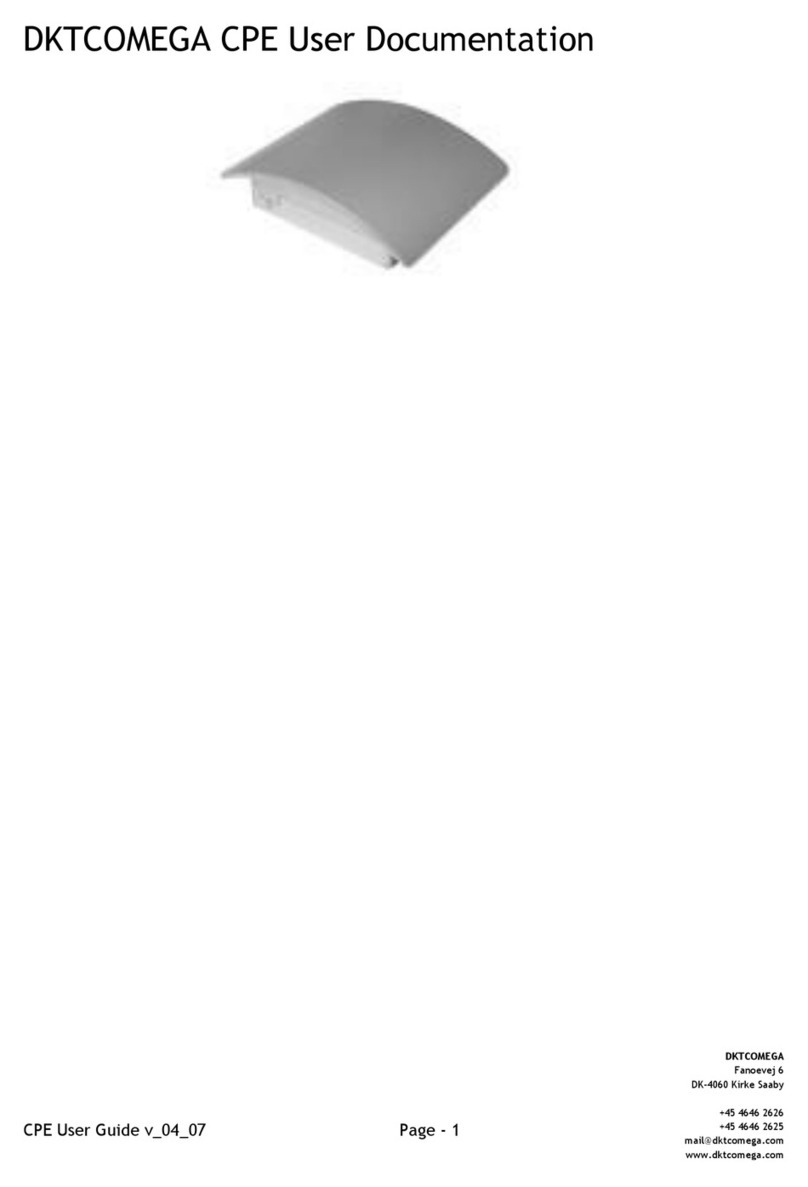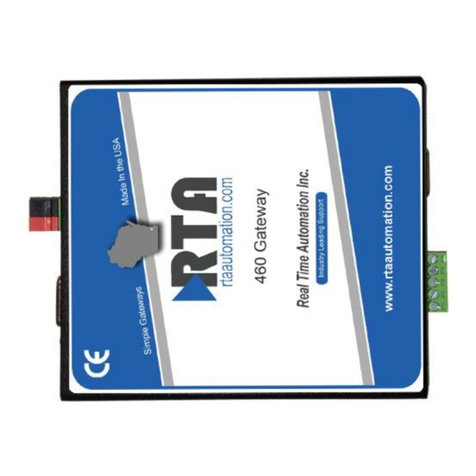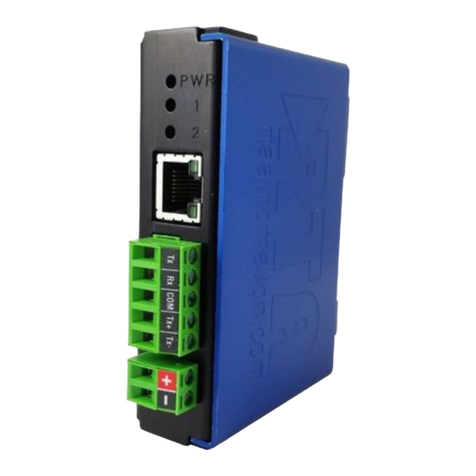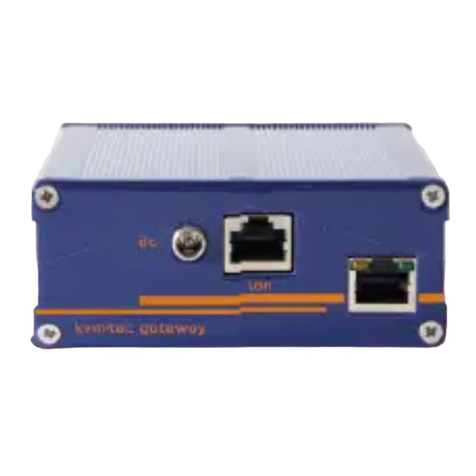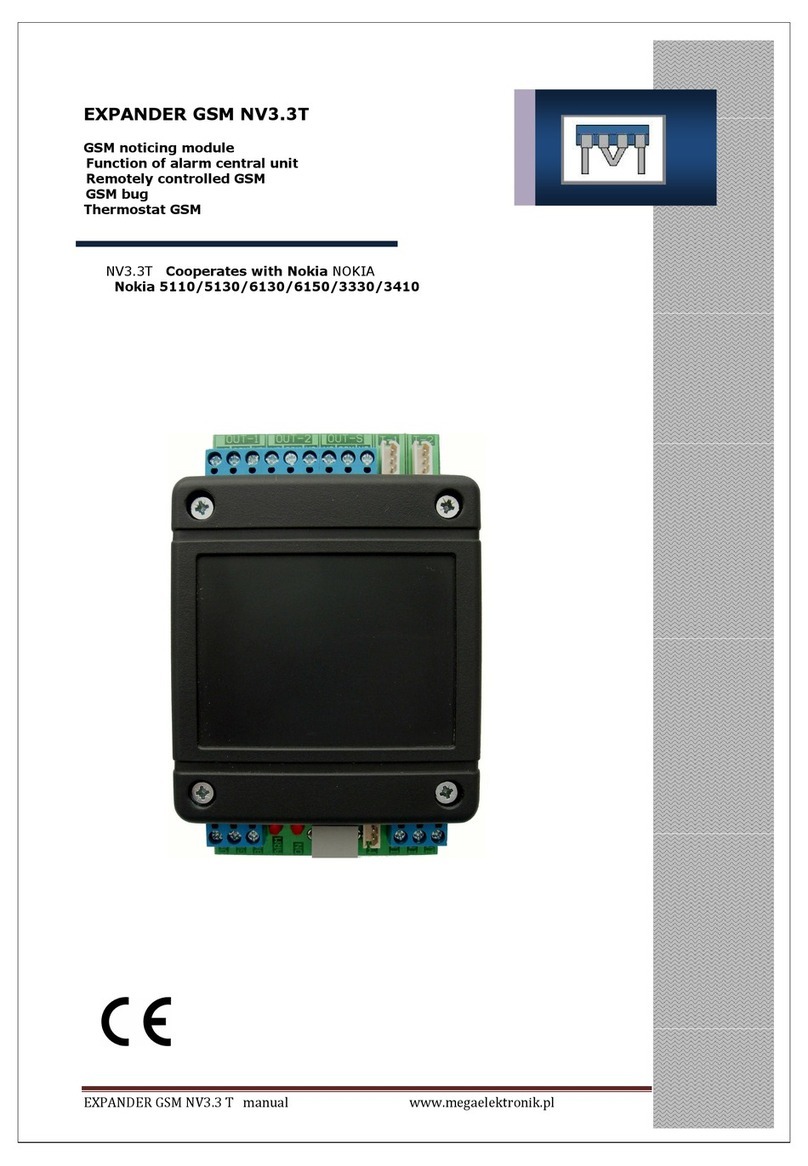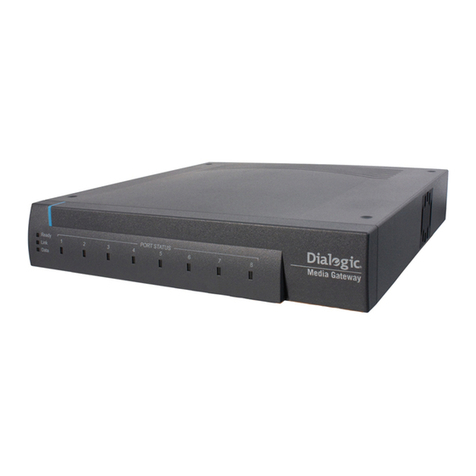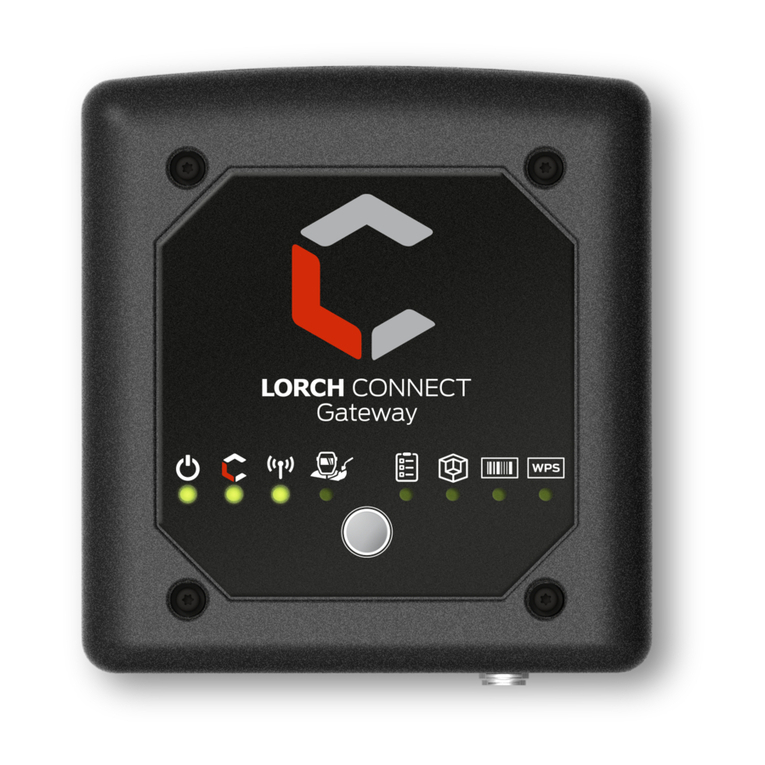Sontheim Verona COMhawk xt User manual

Verona Gen 4 (COMhawk xt)
User Manual

Operations Manual
© Sontheim Industrie Elektronik GmbH 13.05.2022 page 2 of 30
Sontheim_Telemetry_Verona_Gen 4_operations manual.docx Version of the Document: 2.1
Content
Content....................................................................................................................................................2
List of figures .........................................................................................................................................3
List of tables...........................................................................................................................................3
1. Topic:...............................................................................................................................................4
2. Document Reference......................................................................................................................4
3. Author:.............................................................................................................................................4
4. Date:.................................................................................................................................................4
5. History of the Document................................................................................................................4
6. Preliminary Note .............................................................................................................................5
6.1. Symbols used............................................................................................................................5
7. Safety instructions .........................................................................................................................5
7.1. General......................................................................................................................................5
7.2. Target Group .............................................................................................................................5
7.3. Electrical Connection.................................................................................................................5
7.4. Tampering with the Device........................................................................................................5
7.5. General Implementation Instructions.........................................................................................6
7.6. Requirements on the Installation Point and Position.................................................................6
7.7. Notes on Transport and Storage...............................................................................................6
7.8. Notes on Wiring and Circuitry....................................................................................................7
7.9. Intended Use.............................................................................................................................7
7.10. Improper Use.........................................................................................................................7
7.11. Further Information ................................................................................................................8
7.12. Radio Frequency Safety Cautions.........................................................................................8
7.13. Label information ...................................................................................................................9
7.14. ECU interfaces and vehicle integration aspects....................................................................9
7.15. Further Safety Cautions - Country Specific ...........................................................................9
7.15.1. Brazil...............................................................................................................................9
8. Operation, Service, Maintenance and Repair, Decommissioning ...........................................10
8.1. Operation.................................................................................................................................10
8.2. Maintenance and Repair .........................................................................................................10
8.2.1. Cleaning and Care ...........................................................................................................10
8.2.2. Inspection and Maintenance............................................................................................10
8.2.3. Repair...............................................................................................................................10
8.3. Removal and Replacement.....................................................................................................10
8.4. Disposal...................................................................................................................................10
8.5. Extension and Conversion ......................................................................................................11
9. Verona Gen 4 Overview................................................................................................................11
9.1. Verona Gen 4 HW Block Diagram:..........................................................................................11
10. COMhawk xt / Verona Gen 4 –Technical Data.......................................................................12
11. RF Specification........................................................................................................................13
11.1. GSM/UMTS/LTE RF Specifications.....................................................................................13
11.2. Antenna Specifications ........................................................................................................14
12. Software.....................................................................................................................................15
12.1. SW Overview.......................................................................................................................15
13. SW Access to COMhawk xt: ....................................................................................................16
13.1. Operating the Software via LAN (Verona Gen 4 is powered and connected to the PC via LAN
cable) 16
13.2. Operating the Software via WIFI (Verona Gen 4 is powered and connected to the PC via
WiFi) 17
13.3. WinSCP Access:..................................................................................................................20
14. GPS Position .............................................................................................................................21
15. Insert the SIM card....................................................................................................................22
16. Verona Gen 4 Housing..............................................................................................................25

Operations Manual
© Sontheim Industrie Elektronik GmbH 13.05.2022 page 3 of 30
Sontheim_Telemetry_Verona_Gen 4_operations manual.docx Version of the Document: 2.1
16.1. Scale Drawings:...................................................................................................................25
16.2. Mounting Plate:....................................................................................................................27
17. Verona Gen 4 Pinout.................................................................................................................28
List of figures
Figure 1 Label Information.......................................................................................................................9
Figure 2 Verona Gen 4–Block diagram ................................................................................................11
Figure 3 Function Overview...................................................................................................................15
Figure 4 Function Overview with more detailed clouded services Explanation.....................................15
Figure 5 Network Configuration (in Windows 10) ..................................................................................16
Figure 6 Ethernet Configuration.............................................................................................................16
Figure 7 setup PUTTY Console.............................................................................................................17
Figure 8 Verona Gen 4 Response in Putty Console..............................................................................17
Figure 9 Windows 10 WLAN - networks available.................................................................................18
Figure 10 WIFI Verona Gen 4 - automatic connection ..........................................................................18
Figure 11 PuTTY Console to connect the COMhawk xt........................................................................19
Figure 12 Enter the Login ......................................................................................................................19
Figure 13 COMhawk xt is connected.....................................................................................................19
Figure 14 Start Screen for WinSCP.......................................................................................................20
Figure 15 COMhawk xt Start Directory Structure (Example).................................................................20
Figure 16 COMhawk xt Root Directory (Example).................................................................................21
Figure 17 prepare the SIM card with the right Orientation.....................................................................22
Figure 18 Pre-set the SIM card with the right Orientation to set into the Holder...................................23
Figure 19 Please the SIM card into the SIM Connector on the PCB. Push carefully in........................23
Figure 20 SIM card is connected and automatically locked in Operation-Position................................24
Figure 21 3D view Verona Gen 4 Telemetry .........................................................................................25
Figure 22 Verona Gen 4 Telemetry - Front View with Dimensions .......................................................25
Figure 23 Verona Gen 4 Telemetry - Side View with Dimensions.........................................................26
Figure 24 Verona Gen 4 Telemetry - Detail View: FAKRA Antenna Connection..................................26
Figure 25 Verona Gen 4Telemetry –Definition of Sides.......................................................................27
Figure 26 Mounting Scheme..................................................................................................................27
Figure 27 Verona Gen 4 Pinout.............................................................................................................28
Figure 28 30 Pin Receptacle (Rear View) ..........................................................................................28
Figure 29 Ethernet RJ45-Plug and Network-Cable ...............................................................................28
List of tables
Table 1 Document Reference..................................................................................................................4
Table 2 History of the Document .............................................................................................................4
Table 3: System and Functional Requirements (Populated Option is Bold) .........................................13
Table 4 Bands, frequencies, maximum power and maximum antenna gain for EC ........................................14
Table 5 Bands, frequencies, maximum power and maximum antenna gain for FCC / ISED.............................14

Operations Manual
© Sontheim Industrie Elektronik GmbH 13.05.2022 page 4 of 30
Sontheim_Telemetry_Verona_Gen 4_operations manual.docx Version of the Document: 2.1
1. Topic:
This document is a brief description for the next generation telemetry node from Sontheim Industrie
Elektronik GmbH. This document describes to put the device into operation.
2. Document Reference
Number
Author
Name
Version /
Document
number
Table 1 Document Reference
3. Author:
Roland Mader & Samuel Claeys& Markus Brormann & Steffen Doster
4. Date:
April 27th , 2022
5. History of the Document
Version
Description
Date
1.0
Build manual
14.03.2022
2.0
Document extended:
Chapter 5:History of the document updated.
Chapter 7.13 added
Chapter 8 Operation, Service, Maintenance and Repair,
Decommissioning added
Chapter 7.13 Description of label added
Chapter 10: HMN and HVIN added to technical data
Chapter 11 frequency band and maximum power of
WIFI and LTE bands described.
Chapter 11.2 Used antenna and maximum allowable
antenna gain –added
HMN and HVIN: Verona Gen 4 consequently used in
manual
27.04.2022
2.1
7.13. Figure 1 Label Information updated.
9. Table 3 HVIN corrected to Verona GEN4.
11.1 Table 5 Values corrected.
11.2. clarification for 0dBi antenna statement added.
09.05.2022
2.2
9. Table 3 FCC-ID corrected to Verona GEN4
chapter 7.15 and 7.15.1 added
13.05.2022
Table 2 History of the Document

Operations Manual
© Sontheim Industrie Elektronik GmbH 13.05.2022 page 5 of 30
Sontheim_Telemetry_Verona_Gen 4_operations manual.docx Version of the Document: 2.1
6. Preliminary Note
This document applies to devices of the type COMhawk xt - Verona Gen 4. This document is
intended for specialists. These specialists are people who are qualified by their appropriate
training and their experience to see risks and to avoid possible hazards that may be caused
during operation or maintenance of the device. The document contains information about the
correct handling of the device.
Read this document before use to familiarize yourself with operating conditions, installation and
operation. Keep this document during the entire duration of use of the device.
6.1. Symbols used
Instructions
Reaction, result
[…] Designation of pushbuttons, buttons or indications
Cross-reference
Important note
Non-compliance can result in malfunction or interference
Information
Supplementary note
7. Safety instructions
7.1. General
These instructions contain texts and figures concerning the correct handling of the device and
must be read before installation or use. Observe the operating instructions. Non-observance of
the instructions, operation which is not in accordance with use as prescribed below, wrong
installation or incorrect handling can seriously affect the safety of operators and machinery.
7.2. Target Group
These instructions are intended for authorized persons according to the EMC and low-voltage
directives. The device must only be installed, connected and put into operation by a qualified
person.
7.3. Electrical Connection
The connections may only be supplied with the signals indicated in the technical data and/or on
the device label.
7.4. Tampering with the Device
In case of malfunctions or uncertainties please contact the manufacturer. Tampering with the
device can seriously affect the safety of operators and machinery. It is not permitted and leads
to the exclusion of any liability and warranty claims.

Operations Manual
© Sontheim Industrie Elektronik GmbH 13.05.2022 page 6 of 30
Sontheim_Telemetry_Verona_Gen 4_operations manual.docx Version of the Document: 2.1
7.5. General Implementation Instructions
Reliable operation cannot be guaranteed if samples or prototypes are used in series systems.
The proposed circuits do not imply any technical liability for the system on the part of Sontheim
Industrie Elektronik GmbH.
Incorrect connections could cause unexpected signals at the outputs of the ECU.
The ECU firmware/software must be installed and removed by Sontheim Industrie Elektronik
GmbH or the system integrator in order to uphold the warranty.
It is not permissible to open the ECU or to modify or repair the ECU. Modification or repairs to
the wiring could result in dangerous malfunctions. Repairs to the ECU may only be performed
by Sontheim Industrie Elektronik GmbH.
The Verona Gen 4 / COMhawk xt may not used for functional safety purpose.
When the electronics are not energized, no pins must be connected to a voltage source. Thus,
when the current supply is switched off, the supply for the electronics, the power outputs and
the external sensor supply have to be switched off together.
While commissioning, flashing and maintenance, the ECU and the machine/vehicle may pose
unforeseen hazards. Before commissioning the system, you must therefore ensure that the
vehicle and the vehicle or machine are in a safe condition.
Make sure that nobody is in the system or vehicle or machine‘s danger zone.
No defective or incorrectly functioning components may be used. If the components should fail
or demonstrate faulty operation, repairs must be performed immediately.
ECUs used to develop software may only be installed in series production machines if it can be
guaranteed that these controllers have not been flash programmed with new software more than
500 times. Controllers that have been programmed more than 500 times must not be installed
in series production machines!
7.6. Requirements on the Installation Point and Position
Do not install the ECU close to parts that generate considerable heat (e.g. exhaust).
Radio transmitting equipment and mobile telephones must not be used in the passenger or
driver‘s cab without a suitable antenna or near the control electronics.
A sufficiently large distance to radio transmitting systems must be maintained.
The ECU meets the ECE R 10 requirement for electromagnetic immunity and emissions.
All connectors must be unplugged from the electronics during electrical welding and painting
operations.
Cables/wires must be sealed individually to prevent water from entering the device.
The ECU must not be electrostatically charged, e.g. during painting operations.
Install the ECU in such a way that the electrical plug is not facing upwards. This ensures that
any condensation water that may form can flow out. Also, consider and protect the wiring
harness against water entry and especially in the area of the plugs.
Standing and permanently running water are not permitted anywhere near the circumferential
groove (lid/base connector) or the pressure balance element.
7.7. Notes on Transport and Storage
If the ECU is dropped, the controller must not be used any longer as invisible damage could
have a negative impact on reliability.

Operations Manual
© Sontheim Industrie Elektronik GmbH 13.05.2022 page 7 of 30
Sontheim_Telemetry_Verona_Gen 4_operations manual.docx Version of the Document: 2.1
Control units must be stored with a mean relative humidity of 60% and at a temperature between
-10 °C and +50 °C. Storage temperatures between -40 °C and +90 °C are briefly permissible,
for up to 100 hours.
After a storage time of more than 5 years, the ECU must be examined by the manufacturer.
7.8. Notes on Wiring and Circuitry
The electronics and the power outputs of an ECU must be fed from the same power source.
When wiring the output stages, the maximum cumulative output current for each output stage
group should be noted. The cumulative output current means a permanent, simultaneous
actuation of the output stages.
The product may only be wired when it is de-energized.
Lines to the electronics must not be routed close to other power-conducting lines in the system,
or vehicle.
The wiring harness should be fixated mechanically in the area in which the ECU is installed
(spacing < 150 mm). The wiring harness should be fixated so that in-phase excitation with the
controller occurs (e.g. at the controller bolting point).
If possible, lines should be routed in the vehicle interior.
If the lines are routed outside the vehicle, make sure that they are securely fixed.
Lines must not be kinked or twisted, must not rub against edges and must not be routed through
sharp-edged ducts without protection.
Lines are to be routed with sufficient spacing to hot or moving vehicle parts.
Digital outputs must not be linked or bridged.
Digital outputs with current measurement must not be used to light bulbs (due to very low cold
resistance).
The voltages supplies sources must not be pulled up by an external connection, e.g. the
application of a higher voltage, because they operate only as a voltage source but not as a
voltage sink. Pulling up a sensor supply may result in unexpected malfunctions and damage of
the ECU in lasting operation.
The high side outputs must not be externally connected to battery.
7.9. Intended Use
The ECU is designed for use in automotive applications as vehicle, trucks, busses and trailer
and mobile working machines provided no limitations / restrictions are made to certain
application areas in this data sheet.
Operation of the ECU must generally occur within the operating ranges specified and released
in data sheet, particularly with regard to voltage, current, temperature and other described
environmental influences.
Use outside of the specified and released boundary conditions may cause damage to
components, which could result in consequential damage to the vehicle, trucks, busses, trailer
and mobile working machine.
7.10. Improper Use
Any use of the ECU other than that described in chapter „Intended use“ is considered to be
improper.
Use in explosive areas is not permissible.
Damage resulting from improper use and/or from unauthorized interference in the component
not described in this manual or data sheet render all warranty and liability claims void with
respect to the manufacturer.

Operations Manual
© Sontheim Industrie Elektronik GmbH 13.05.2022 page 8 of 30
Sontheim_Telemetry_Verona_Gen 4_operations manual.docx Version of the Document: 2.1
7.11. Further Information
In addition, the application-specific documents (software descriptions, software manuals, etc.)
are to be observed.
7.12. Radio Frequency Safety Cautions
NOTICE:
This device complies with Part 15 of the FCC Rules and with Industry Canada licence-exempt
RSS standard(s).
Operation is subject to the following two conditions:
(1) this device may not cause harmful interference, and
(2) this device must accept any interference received, including interference that may
cause undesired operation.
Le présent appareil est conforme aux CNR d'Industrie Canada applicables aux appareils radio
exempts de licence. L'exploitation est autorisée aux deux conditions suivantes:
(1) l'appareil ne doit pas produire de brouillage, et
(2) l'utilisateur de l'appareil doit accepter tout brouillage radioélectrique subi, même si le
brouillage est susceptible d'en compromettre le fonctionnement.
NOTICE:
Changes or modifications made to this equipment not expressly approved by Sontheim Industrie
Elektronik GmbH may void the FCC authorization to operate this equipment.
Radiofrequency radiation exposure Information according 2.1091 / 2.1093 / KDB 447498 / RSS-
10: This equipment complies with FCC radiation exposure limits set forth for an uncontrolled
environment. This equipment should be installed and operated with minimum distance of 20 cm
between the radiator and your body.
This transmitter must not be co-located or operating in conjunction with any other antenna or transmitter.
Cet équipement est conforme aux limites d'exposition aux rayonnements IC établies
pour un
environnement non contrôlé. Cet équipement doit être installé et utilisé avec un minimum de
20 cm de distance entre la source de rayonnement et votre corps. Ce transmetteur ne doit
pas être place au même endroit ou utilise simultanément avec un autre transmetteur ou
antenne.
NOTE: This equipment has been tested and found to comply with the limits for a Class B
digital device, pursuant to Part 15 of the FCC Rules. These limits are designed to provide
reasonable protection against harmful interference in a residential installation. This equipment
generates, uses and can radiate radio frequency energy and, if not installed and used in accordance
with the instructions, may cause harmful interference to radio communications. However, there is no
guarantee that interference will not occur in a particular installation. If this equipment does cause
harmful interference to radio or television reception, which can be determined by turning the
equipment off and on, the user is encouraged to try to correct the interference by one or more of the
following measures:
Reorient or relocate the receiving antenna.
Increase the separation between the equipment and receiver.
Connect the equipment into an outlet on a circuit different from that to which the receiver is
connected.
Consult the dealer or an experienced radio/TV technician for help.

Operations Manual
© Sontheim Industrie Elektronik GmbH 13.05.2022 page 9 of 30
Sontheim_Telemetry_Verona_Gen 4_operations manual.docx Version of the Document: 2.1
7.13. Label information
Description:
Hardware Version
Identification Number
Part Number
Serial Number
FCC Identification Number
IC-ID Identification Number
ECE-R10 release number
IMEI Number
Figure 1 Label Information
7.14. ECU interfaces and vehicle integration aspects
The telemetry node has to be operated according to the environmental specification as
mentioned in technical data, please see chapter 10 COMhawk xt / Verona Gen 4 –
Technical Data.
7.15. Further Safety Cautions - Country Specific
7.15.1. Brazil
ADENDO AO MANUAL
MODELO: VERONA GEN4
Para maiores informações, consulte o site da ANATEL www.gov.br/anatel/pt-br
Este equipamento não tem direito à proteção contra interferência prejudicial e não pode causar
interferência em sistemas devidamente autorizados.

Operations Manual
© Sontheim Industrie Elektronik GmbH 13.05.2022 page 10 of 30
Sontheim_Telemetry_Verona_Gen 4_operations manual.docx Version of the Document: 2.1
8. Operation, Service, Maintenance and Repair, Decommissioning
8.1. Operation
Use the telemetry unit only as describe in 7.9 Intended Use within the performance range
specified in 10 COMhawk xt / Verona Gen 4 –Technical Data.
8.2. Maintenance and Repair
8.2.1.Cleaning and Care
NOTICE:
Damage to seals and electronics/electrics due to mechanical effects!
Please consider the ingress protection class for the ECU, described in chapter 10 COMhawk xt
/ Verona Gen 4 –Technical Data.
The water jet of a high-pressure cleaner may damage the seals and electronics/electrics of the
telemetry unit!
Do not point the high-pressure cleaner directly towards the control unit.
For cleaning and care of the telemetry unit, observe the following:
Check whether all the seals and fittings on the plug-in connections are securely seated to ensure
that no moisture can penetrate into the telemetry unit and the installation space during cleaning.
Use only very small amounts of water and, if necessary, a mild cleaning agent to clean the
telemetry unit. Never use solvents or aggressive cleaning agents.
8.2.2.Inspection and Maintenance
No special activities are necessary.
8.2.3.Repair
The telemetry unit cannot be repaired.
When replacing the telemetry unit, make sure that no contamination can penetrate the mating
connector.
Only use an original spare telemetry unit from Sontheim Industrie Elektronik GmbH or from the
system integrator, otherwise the functional reliability cannot be guaranteed, and the warranty
will be voided.
Address all questions regarding repair to your responsible Sontheim Industrie Elektronik GmbH
service or from system integrator.
8.3. Removal and Replacement
Only remove the telemetry unit when completely de-energized.
8.4. Disposal
Careless disposal of the telemetry unit can lead to environmental pollution.
Only dispose of the vehicle, vehicle parts or electronic parts such as this ECU in approved
recycling companies. Do not simply throw away the vehicle or vehicle parts. Dispose of it in a
waste cycle. This has to be considered from the vehicle owner as well. The system integrator
shall notify the vehicle owner about this topic.
The telemetry unit and its packaging must be disposed of according to the national
environmental regulations of the country in which the telemetry unit is used.

Operations Manual
© Sontheim Industrie Elektronik GmbH 13.05.2022 page 11 of 30
Sontheim_Telemetry_Verona_Gen 4_operations manual.docx Version of the Document: 2.1
8.5. Extension and Conversion
The telemetry unit must not be modified.
The warranty from Sontheim Industrie Elektronik GmbH only applies to the configuration as
delivered.
The warranty will be voided if the unit is modified or extended.
9. Verona Gen 4 Overview
9.1. Verona Gen 4 HW Block Diagram:
Figure 2 Verona Gen 4–Block diagram

Operations Manual
© Sontheim Industrie Elektronik GmbH 13.05.2022 page 12 of 30
Sontheim_Telemetry_Verona_Gen 4_operations manual.docx Version of the Document: 2.1
10.COMhawk xt / Verona Gen 4 –Technical Data
VERONA Gen 4
Micro Controller
NXP iMX6DualLite 32bit- ARM Cortex-A9
800MHz
RAM
External: 512MB/1GB/2GB LPDDR3
External Flash extension
4/8/16/64 GB eMMC NAND Flash
EEPROM
1x EEPROM 32kBit
Real Time Clock
yes
CAN
2-4 CAN interfaces, all of them
- according to ISO 11898 standard, 2.0A
and 2.0B
CAN termination
Split termination in combination with CAN
transceiver
LIN
Optional either Master or Slave
WIFI
1x WIFI module 2,4 GHz ( IEEE 802.11 b/g/n)
with external FAKRA antenna
Bluetooth
1x integrated together with WiFi Module BLE
Ethernet
1x 100 Mbit Ethernet.
Digital Input
4x, up to 32V allowed
Digital Output
1x 1A output with PWM (Voltage Level VBAT)
with HSS
1x 5V output (optional 10 V)
Analog Input
4 x 0 –24 V measurement
Power Supply
24V system: 16 –32V / max. 1A (basic board
configuration)
12V system: 6 –16V / max. 1A (basic board
configuration)
Range: 6 –32V
Housing
Cinch housing with 30-pole automotive
connector
IP69K protection
Operating temperature
-40°C ... +85°C
Storage temperature
-40°C … +85°C
Extensions/Options
LAN
10/100 Mbit/s LAN for cable network
connection
GNSS
GNSS module: GPS/GLONASS, Galileo,
BeiDou with external FAKRA antenna

Operations Manual
© Sontheim Industrie Elektronik GmbH 13.05.2022 page 13 of 30
Sontheim_Telemetry_Verona_Gen 4_operations manual.docx Version of the Document: 2.1
Cellular
Cellular module with LTE CAT4/UMTS/GSM
support, external FAKRA antennas
Security
function integrated in iMX6
Temperature sensor
Temp. range -55 up to +125°C, 3% accuracy
Acceleration sensor
3-axis
Gyroscope-sensor
3-axis
LED
2x 3-color LEDs
Software
Operating System
Linux Kernel: 4.19 (4.19.219)
Boot Loader: U-Boot 2015.01
Certifications
ECE R10 type approval number
E1*10R06/01*9371*00
Machinery directive
Yes, compliant with 2006/42/EC (machinery
directive)
EMC
Yes, compliant with 2014/30/EC (EMC directive)
RF Compliance
Yes, compliant with 2014/53/EC (radio
equipment directive)
Low voltage
Yes compliant with 2014/35/EC (low voltage
directive
RoHS
Yes compliant with 2011/65/EC (RoHS)
HMN / HVIN
Verona GEN4
Table 3: System and Functional Requirements (Populated Option is Bold)
11.RF Specification
11.1. GSM/UMTS/LTE RF Specifications
Technologies
Max. power
[dBm]
Antenna gain
max.:
[dBi]
conducted
E GPRS 900 MHz
33dBm±2dB
0.03
E GPRS 1800 MHz
30dBm±2dB
3.12
LTE FDD 1 1950 MHz
23dBm±2dB
2.17
LTE FDD 3 1800 MHz
23dBm±2dB
3.12
LTE FDD 7 2600 MHz
23dBm±2dB
3.2
LTE FDD 8 900 MHz
23dBm±2dB
0.03
LTE FDD 28 700 MHz
23dBm±2dB
1.57
LTE TDD 40 2300 MHz
23dBm±2dB
3.52
WLAN 2450 MHz
15.0
3.0

Operations Manual
© Sontheim Industrie Elektronik GmbH 13.05.2022 page 14 of 30
Sontheim_Telemetry_Verona_Gen 4_operations manual.docx Version of the Document: 2.1
Table 4 Bands, frequencies, maximum power and maximum antenna gain for EC
Technologies
Max. power
[dBm]
Antenna gain
max.:
[dBi]
conducted
E GPRS 850 MHz
31dBm±2dB
E GPRS 1900 MHz
28dBm±2dB
LTE FDD 2 1900 MHz
23dBm±2dB
1.87
LTE FDD 4 1750 MHz
23dBm±2dB
3.12
LTE FDD 5 850 MHz
23dBm±2dB
0.91
LTE FDD 12 700 MHz
23dBm±2dB
0.95
LTE FDD 13 700 MHz
21dBm±2dB
2.23
LTE FDD 25 1900 MHz
23dBm±2dB
1.87
LTE FDD 26 850 MHz
23dBm±2dB
0.91
LTE TDD 41 2600 MHz
22dBm±2dB
2.90
LTE FDD 66 2150 MHz
23dBm±2dB
3.12
WLAN 2450 MHz
15.0
3.0
Table 5 Bands, frequencies, maximum power and maximum antenna gain for FCC / ISED
11.2. Antenna Specifications
For LTE band use a 0 dBi gain antenna, to be compliant with Table 5 Bands, frequencies, maximum
power and maximum antenna gain for FCC / ISED.
For WiFi, use a maximum 3 dBi antenna for 2.4 GHz frequency band
The maximum antenna gain is listed in the chapter 11.1 GSM/UMTS/LTE RF Specifications.
Use only the following antenna, this antenna was part of the certification:
Antenna: Hirschmann (TE): CGNW 702659 LP S/FAKRAf/3.0
Or alternative:
Antenna Molex 206866

Operations Manual
© Sontheim Industrie Elektronik GmbH 13.05.2022 page 15 of 30
Sontheim_Telemetry_Verona_Gen 4_operations manual.docx Version of the Document: 2.1
12.Software
12.1. SW Overview
Figure 3 Function Overview
Figure 4 Function Overview with more detailed clouded services Explanation

Operations Manual
© Sontheim Industrie Elektronik GmbH 13.05.2022 page 16 of 30
Sontheim_Telemetry_Verona_Gen 4_operations manual.docx Version of the Document: 2.1
13.SW Access to COMhawk xt:
The LAN interface of the telemetry node is connected to the wiring harness (RJ45 line) and is
connected directly to the LAN port of the PC (no switch or similar in between). The IP4 network
configuration of the PC must be set to "Use the following IP address".
Figure 5 Network Configuration (in Windows 10)
Figure 6 Ethernet Configuration
The test object is now controlled via LAN connection.
This requires an SSH connection from the test PC to the test object. This is done, for
example, using the supplied tool "putty" (Release 0.76).
13.1. Operating the Software via LAN (Verona Gen 4 is powered and connected
to the PC via LAN cable)
Log in from the PC to the Verona Gen 4 telemetry node via SSH using the “putty”
software tool:

Operations Manual
© Sontheim Industrie Elektronik GmbH 13.05.2022 page 17 of 30
Sontheim_Telemetry_Verona_Gen 4_operations manual.docx Version of the Document: 2.1
Figure 7 setup PUTTY Console
The Verona Gen 4 reports as follows:
Figure 8 Verona Gen 4 Response in Putty Console
Command line opens, the commands can be entered directly.
13.2. Operating the Software via WIFI (Verona Gen 4 is powered and connected
to the PC via WiFi)
Log in from the PC to the Verona Gen 4 telemetry node via SSH using the “putty”
software tool over WIFI:
SSH connection via Putty (via
network cable):
- IP: 10.0.103.56
-user: root
-passwd: root

Operations Manual
© Sontheim Industrie Elektronik GmbH 13.05.2022 page 18 of 30
Sontheim_Telemetry_Verona_Gen 4_operations manual.docx Version of the Document: 2.1
Figure 9 Windows 10 WLAN - networks available
Select the network: Verona-Gen4-512M-0000
Figure 10 WIFI Verona Gen 4 - automatic connection
Select the network: Verona-Gen4-512M-0000
Enter the network password: secret_word
After connecting the COMhawk xt / VERONA Gen 4, open a SSH console.
In this example, PuTTY was used:
Enter the IP address: 10.0.0.1
Port: 22 (is automatically set)
Than press open

Operations Manual
© Sontheim Industrie Elektronik GmbH 13.05.2022 page 19 of 30
Sontheim_Telemetry_Verona_Gen 4_operations manual.docx Version of the Document: 2.1
Figure 11 PuTTY Console to connect the COMhawk xt
The COMhawk xt / VERONA Gen 4 is connected.
Enter the login: root
Password: root
Figure 12 Enter the Login
After successful login the COMhawk xt / VERONA Gen 4 can be accessed:
Figure 13 COMhawk xt is connected

Operations Manual
© Sontheim Industrie Elektronik GmbH 13.05.2022 page 20 of 30
Sontheim_Telemetry_Verona_Gen 4_operations manual.docx Version of the Document: 2.1
13.3. WinSCP Access:
To easily access from PC the COMhawk xt file system, WinSCP can be used:
Example is with WiFi connection:
Set the IP-address: 10.0.0.1
User: root
Password: root
Figure 14 Start Screen for WinSCP
Protocol is SFTP (was automatically selected)
The COMhawk xt directory opens (right is COMhawk xt):
Figure 15 COMhawk xt Start Directory Structure (Example)
Start is the 'root' directory, -> go up and change to the 'home' directory!
Table of contents
